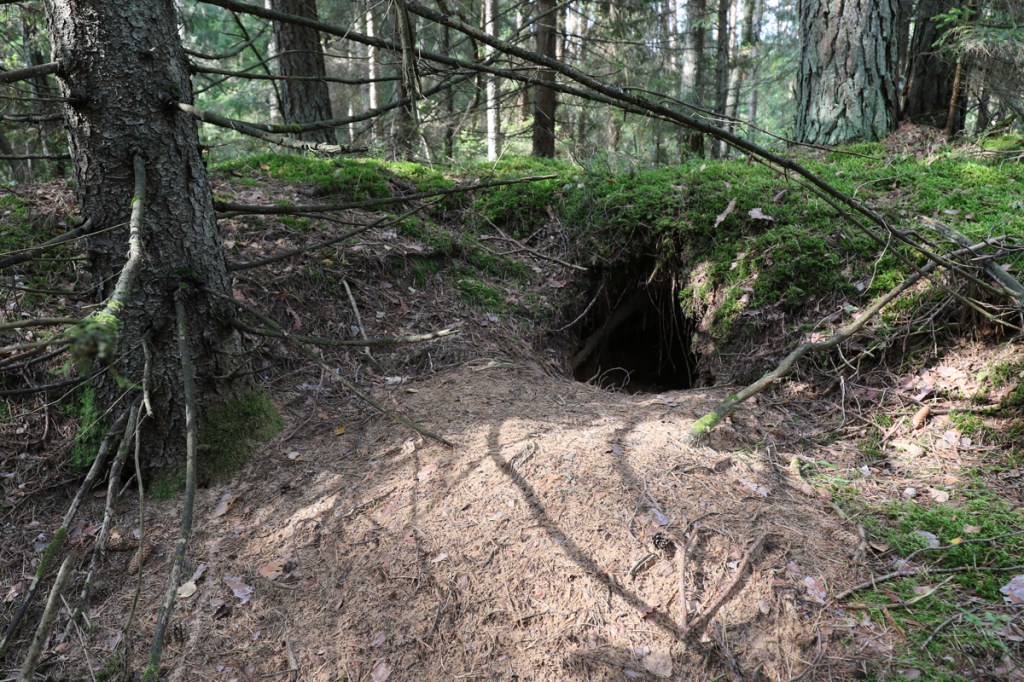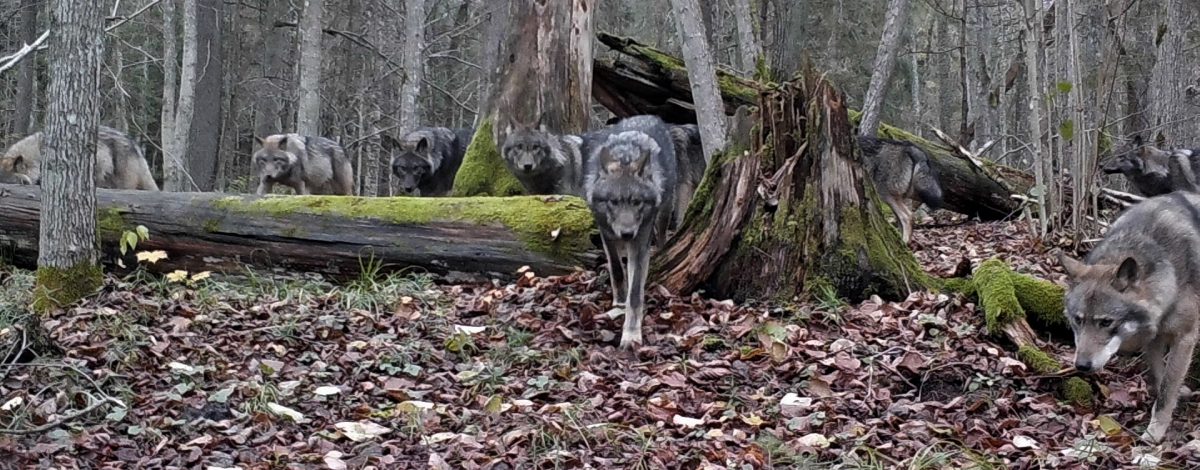In June of 2018 there was post “Trends in the denning behaviour of the wolf and lynx in connection with the changes in the vertebrate community in Naliboki Forest (north-western Belarus)”, in which I described the changes in the denning behaviour of wolves and lynxes in connection with the population growth of the lynx, red deer, bison, and recovering of the badger population in the 2010s. It was shown that wolves with their prevailing of an open denning appeared in the hard situation to reproduce despite of the extra breeding efforts, first of all, with a pack multi-breeding.
In the 2010s Naliboki Forest the majority of wolf pups did not survive, and till the beginning of winter only not more than a quarter of pups were still alive. For instance, in the breeding season of 2018 only one pup survived till January of 2019 out of five or perhaps even six litters. In 2017 after quite intensive breeding in May with at least 9 litters there was registered only 4% of pups in the local wolf population already in the beginning of winter. Before in 2008-2014 having markedly fewer lynxes, red deer and bison, 26-44% of pups were censused in the same wolf local population in early winters. Facing with killing of pups by the inimical animals (bison, red deer, elk and lynx), wolves tried to adapt to the new unfavourable situation by denning more in burrows (but burrows were densely occupied by badgers), with denning in open grasslands (but red deer females often gave birth there and they trampled wolf pups), and by emigrating from Naliboki Forest in its more rural surroundings with fewer number of these inimical species.
Another adaptation was the marked change in the wolf denning habitats, that was already earlier reported in the post “Trends in the denning behaviour of the wolf and lynx in connection with the changes in the vertebrate community in Naliboki Forest (north-western Belarus)”. It was told that in Naliboki Forest age of pine stands by wolves as a main denning habitat type increased markedly. During the first decade of the 2000’s and early 2010’s only about 6% of the wolf dens, which were found by us (n=736 dens, mostly without pups, recent ones from were pups were recently relocated), were situated in pine stands or pine-spruce mixture. That time the main denning sites of wolves were in treefalls, young spruce thickets in clearcuts with early reforestation and abandoned badger setts, and 81% of the mentioned 736 wolf dens were registered in these three habitat elements. Quite opposite, in the new denning-unfavourable situation for breeding wolves in Naliboki Forest since 2016, about 52% of the found wolf dens (n= 104, again mostly without pups, recent ones) were situated in pine stands or pine-spruce mixture with poor forest floor. This switch in the used denning habitats by wolves may be explained merely by potentially less disturbance of breeding wolves by wild ungulates and lynxes in pine or pine-spruce stands with poor forest floor. These habitats are poor in food and poorly structured and thus markedly less frequently used by red deer, bison and lynxes that are hazardous to denning wolves.
During the breeding of wolves in May 2019, when the number of red deer and bison increased even more in comparison with May 2016-2018, it was found that all 51 wolf dens (3 active dens with pups and 48 already abandoned dens due to relocating of pups) from four investigated breeding groups of wolves were situated in pine or mixed pine-spruce stands on dry lands almost without fallen trees and with poor forest floor. In such forest patches there were registered the minimal abundance of tracks of wild ungulates, while all known treefalls were densely occupied by red deer, elk and bison mainly for breeding, and all burrows were densely occupied by badgers. In pine or pine-spruce stands that are mostly rather open habitats in Naliboki Forest parent wolves made a cavity-den mainly.








These photos show the choice of denning habitats by breeding wolves in Naliboki Forest, when the population density of bison, red deer, elk and lynx was rather high since 2014.








Very interesting to read of this change in Denning behaviour .
LikeLike